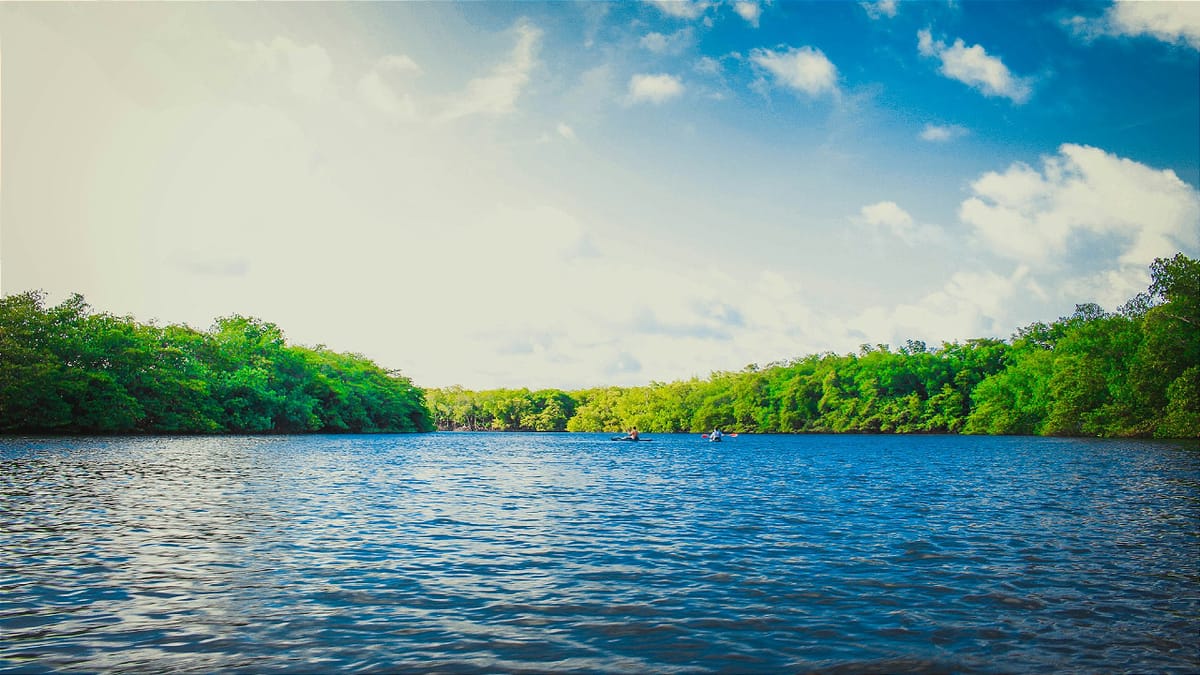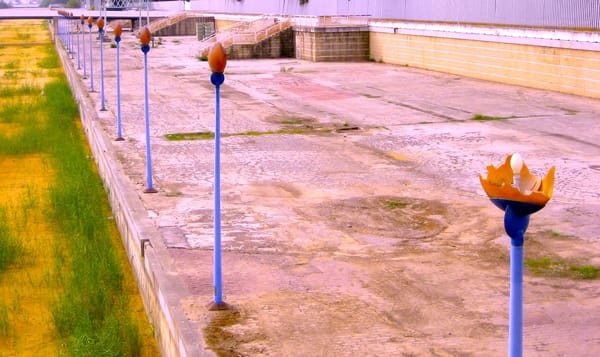Targeted Universalism in coalitions
exploring the ant-raft model

Critter-wise, the state of texas is more or less the australia of the united states. Plenty of species there, native or imported, are ones you don't want to tangle with if you can help it. The humble but ferocious fire ant has a bite that hurts for ages. It feels like an angry mosquito (which texas also has in droves). What's even scarier than a single fire ant is a cluster of them. When their home floods they hold on to each other to form a raft that floats them to safety. Try enjoying the cool rush of the Pedernales river with that in mind!
One of my favorite parts of my work is when I'm building coalitions. I love bringing several organizations together to work on a project. Coalitions share resources and ideas while reducing duplicative work. Like the ants, organizations that join together help each other stay afloat.
Many of the problems we face each day are systemic. A Targeted Universalism (TU) framework is one way to make change at a systems level. john a. powell of the Othering and Belonging Institute calls it "equity 2.0." In my mind, TU works best when it's led by entities like governments, with a broad ability to make change in a region. It also thrives in closed systems, like a high school trying to improve graduation rates for all students. In both cases, the convening entity has a lot of control on how they carry out their decisions.
But can you imagine a government or school system solving grand problems right now? Not enough policymakers seem to have the courage to do anything about the issues we face. And most schools are running at full speed away from anything with even a whiff of equity to it. But small organizations hardly have the resources they need to tackle big problems.
I was always struck by the "bigness" of Targeted Universalism. Would it be possible to run TU through a coalition of small nonprofits?
reintroducing Targeted Universalism
Rather than trying to “close gaps” between racial and identity groups, TU does two things. First, it establishes a universal standard that is ambitious but attainable. Next, it creates targeted strategies to help all groups of people meet that goal. TU follows the 5 steps below. If you want to learn about a particular step, I have a blog post for each of them.
Targeted Universalism Framework
- Establish a universal goal based upon a broadly shared recognition of a societal problem and collective aspirations.
- Assess general population performance relative to the universal goal.
- Identify groups and places that are performing differently with respect to the goal. Groups should be disaggregated.
- Assess and understand the structures that support or impede each group or community from achieving the universal goal.
- Develop and implement targeted strategies for each group to reach the universal goal.
– from Targeted Universalism: Policy and Practice
This framework makes a lot of sense from a government or entity's perspective. They get people together, figure out these steps, then create the strategies we need to reach the goal. What would a coalition of organizations need to do this? They'd need broad agreement of the problem they want to solve together. They'd need decision-making authority and resources to carry out the strategies they create.
I propose we bookend the classic TU steps I named above. Let's call it the ant-raft model.
Ant-Raft Targeted Universalism Framework
(working title)
- Identify a societal problem. What issue affects a wide swath of people? Housing insecurity affects a disproportionate amount of Black and Indigenous residents. But everyone is susceptible to housing loss. And white and Asian people experience homelessness too. The problem should be widespread and a large number of groups want to solve it.
- Identify your greatest geographic region of influence. There's a sweet spot here that's kind of subjective. We want an area big enough to benefit as many people as we can include. But we want an area small enough that we can make meaningful change within it. Yes, everyone in the u.s. should have a home to live in. But a coalition based in one city may not have the leverage we need to make that happen.
- Identify coalition builders within this geographic region. Who else can you involve? Who is also working to solve this issue? Who is working on a related issue or branch cause? Who has a stake in the outcomes we're trying to achieve? Who works with groups that are at greater risk for our issue—even if the group itself doesn't work on that issue? A group that supports disability justice might not have direct experience preventing homelessness. They would still have plenty to contribute.
These next four steps are the ones from the original TU framework but they're not super easy to follow. I'm rewriting them into plain language because that's how the ant-raft model goes!
- TU step 1. Name the problem in society that we want to solve. Set a goal that we want everyone in our region to be able to meet. Make this goal universal, ambitious, but doable (even if it takes a long time).
- TU step 2. Figure out where the general population is when compared to that goal.
- TU step 3. Describe how different groups are doing compared to the universal goal. Describe how people in different places are doing compared to the same goal. Group people into as many groups as you need to describe their struggles against the system.
- TU step 4. Study these groups and understand their circumstances. What holds each group back from achieving the goal? How do some groups do well where others don't?
The end of the TU framework also needed some adjusting. I wanted to make it more community-driven and community-focused. The advice process is a great model for how we'd want groups to take the lead on naming strategies that are best for them. I've incorporated it into the remaining steps.
- Modified TU step 5. Meet with people from the groups you found. Share with them what you've found so far. Together, create a strategy that would help that group reach the universal goal. Do this for every group, no matter how small.
- In coalition and in community, share everything you learned. What strategies did we develop? What are each of our organizations already doing? What gaps did we find? Who can or is already working to fill them? What do we need?
Say our universal goal is housing for all. What approaches are we trying at every step of a person's housing journey? Who is working on eviction prevention? Who is working on temporary housing solutions? Who can create more affordable/free housing? Finding solutions that work for people, no matter where they are, is what matters. It doesn't have to be a single entity that handles every strategy. - Make plans to achieve the strategies we created. We can achieve some strategies by doing more of the work we've already started. Organizations can team up to devise new approaches or programs that fill in the gaps we found. Or we can restate the proposals we make when we apply for funding. Coalitions may not have the decision-making power to do this all themselves.
Lily Zheng reminds us there are at least 6 types of power. How would a coalition employ them? We use reward power to create stronger bonds of sharing among coalition members. We use coercive power when we act en masse to shame a politician into doing the right thing. We use referent power when we lean on the connections we have to find the best way forward. And we use expert and informational power when we speak to the experiences and knowledge we have.
I don't know why I keep coming up with 10 steps whenenver I adapt frameworks. One for each of my fingers, I guess.
more thoughts
Can we have systems-level impact as a network of organizations funded by that system? "The people united will never be divided" applies to coalitions, too. We hold fast to each other to maintain our principles and share resources. Resources are always scarce in systems ruled by greed. We can change which projects each coalition member goes after. Or we can all start applying under one umbrella organization.
How do we assign resources to all the strategies we need? The O&B Institute has two recommendations here. First, the universal standard must be "plausible if not realistically achievable." Second, we should "triage" the need against the resources we do have. We'd want to give priority to support the groups with the most severe or urgent needs. That said, we should not focus on only one group's targeted solutions. O&B recommends at least 3 groups should feel the impact in the initial response. Some strategies will benefit more than one group; those are good ones to try next.
What if people disagree on what strategies are effective? Most organizations—hell, most people—will push their strategy as the best. Step 9 of ant-raft (I'm going with it) is about sharing strategies back with communities. Those communities should take the lead on the strategies we focus on. No strategy will be one-size-fits-all. We'll no doubt need many strategies to reach every group.
What kind of organizations can take part? When I started drafting this process, I wanted something that would work for a mutual aid group too. But are all mutual aid groups set up to engage with systems like nonprofits do? How many groups would be willing to work with governments, for all the harm that often entails? Mutual aid groups do form coalitions with each other. Some have convened gatherings with other groups. Most will freely exchange funds, resources, and information with each other.
forming the raft
We're facing a lot of terrible situations, y'all. We need to take every opportunity we can to stick together. Individuals in power hate unions because we're stronger than them. If we can't beat the forces that oppress us, we can create something even better without them. Fire ants are eusocial, like humans: we need each other to survive. The ant-raft model of Targeted Universalism might be one more way to bite back.



